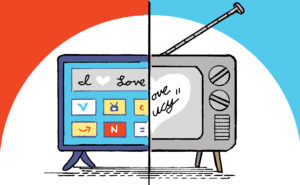First-party data will save us all from signal loss, right?
Maybe.
First, though, advertisers – especially mid-size brands – need tools that make first-party data more accessible and easier to use, said Amol Waishampayan, chief product officer of ad planning and activation platform fullthrottle.ai.
On Wednesday, fullthrottle.ai announced a generative AI-powered “Audience Library” that uses a combination of large language models (LLMs) and algorithms to sort first-party data into audience segments based on demographics, behavior and purchase intent.
Third-party problem
Most third-party data is already prepackaged into actionable audience segments.
“You can say, ‘Cool, give me all the automotive market intenders,’ and I’m just going to go to town on that stuff all day,” Waishampayan told AdExchanger.
Comparatively, there’s a lot of work that goes into sourcing, sorting, scaling and matching first-party data on the open internet before a marketer can buy ads against it.
The audience library is an organizational framework for that data, relying on LLM models (Claude, Gemini and OpenAI) to match, sort, and provide insights.
More importantly, the generative AI elements are embedded into the way the platform processes language, rather than as an add-on chatbot-style feature.
The library tool also registers where each customer is on their journey, allowing brands to tailor their messaging to people who are ready to buy, said Brian Baker, president of automotive and chief client officer at ad agency Stream Companies.
By integrating first-party data in this way, Stream can point out to its clients which specific tactic actually drove a transaction with a customer, Baker said.
Region-specific data
Many of Stream’s clients are local and mid-market businesses, which have a harder time managing first-party data at scale than big national brands do.
But those smaller businesses also need to rely on first-party data more, because their customers are more localized to a particular region.
Take automotive retailers, for example.
People often begin their car shopping experience with online research, but later go to a physical location when they’re getting closer to converting. The audience library’s generative list function can help reach those types of customers, said Baker.
Entering a prompt like “Provide me a list of in-market hybrids or electric vehicle buyers,” will yield thousands of names of potential customers across a car dealership group, he said.
“Names,” in this case, can also mean other actionable signals depending on what’s in the original data set, including email addresses, IP addresses and even postal addresses.
“For auto, your address is actually probably one of the most powerful pieces [of data], because often there’s a finance deal that’s involved,” said Waishampayan. “The address has to be right, because you’re getting a loan.”
A ‘completely different approach’
According to Waishampayan, roughly 90% of fullthrottle.ai’s advertiser clients have uploaded all their transactional data into its platform so far, which he claims has an 85% match rate – much higher than the industry standard, which he put at around 30 to 35%.
Stream has seen good results for clients so far, including shortening the time it takes to convert ready-to-buy automotive shoppers by about 10 days.
The agency has also been able to experiment with new advertising strategies.
For one chain of Honda dealerships, Stream developed a website to provide educational content about electric and hybrid vehicles, with embedded pixels that could capture consumer interest for later retargeting.
Using the audience library, Stream could then analyze factors like how long each visitor spent on the green car information website and how many times they visited as a signal that they were close to a purchase.
Within one month, the Honda retailer sold 756 vehicles to people who’d only visited the green car site and not any of the individual dealership sites. (For perspective, the average dealership sold around 918 cars in 2023.)
“We’re now able to pull them across into our universe and actually get them to transact,” said Baker. “It was unbelievably exciting to see us take a completely different approach to the automotive business.”














